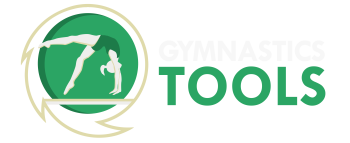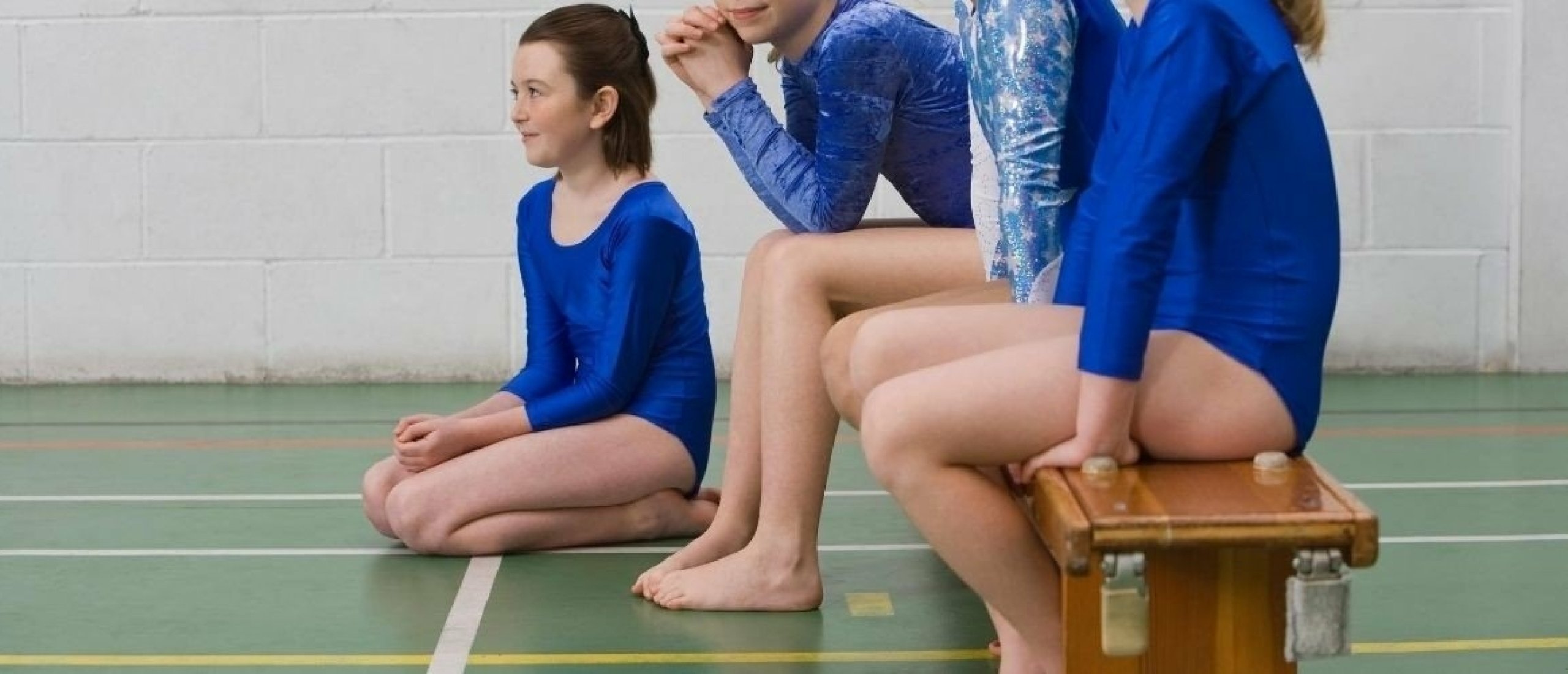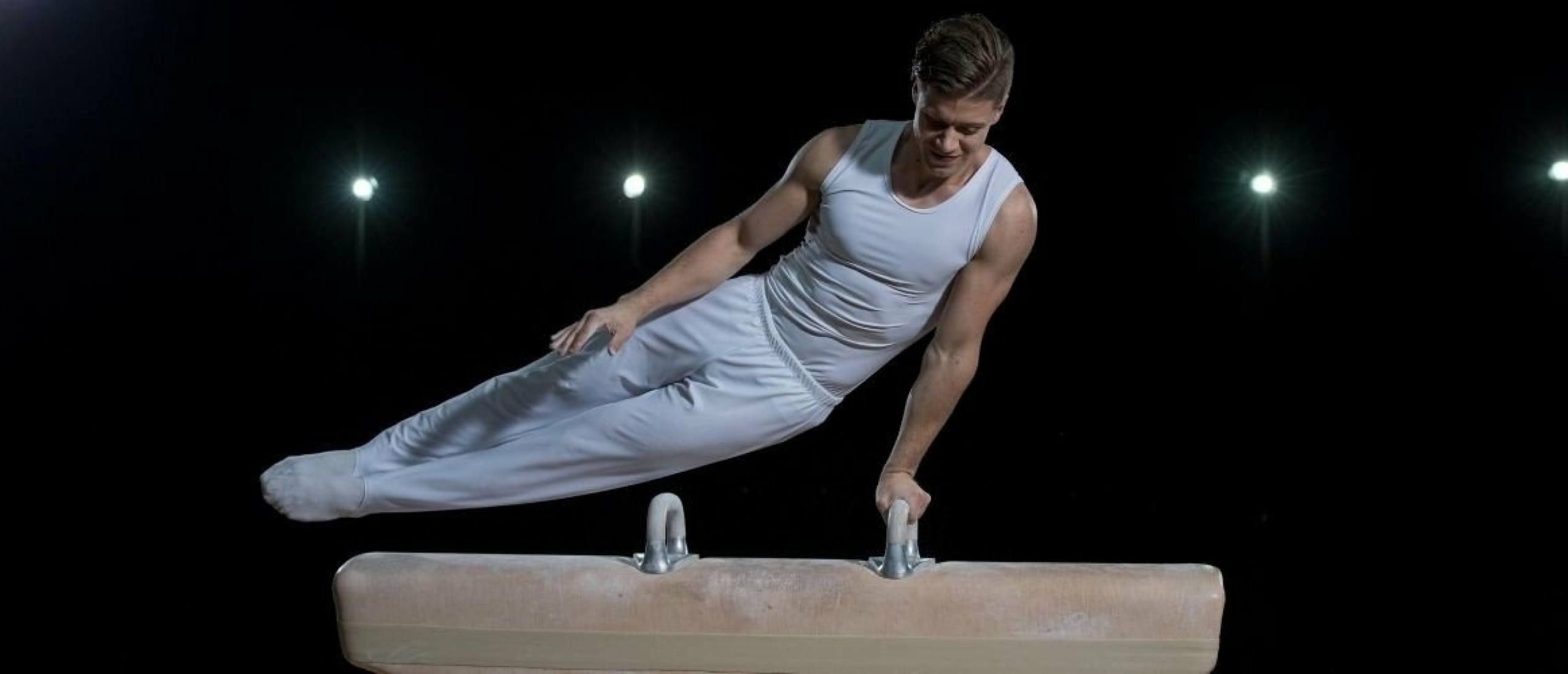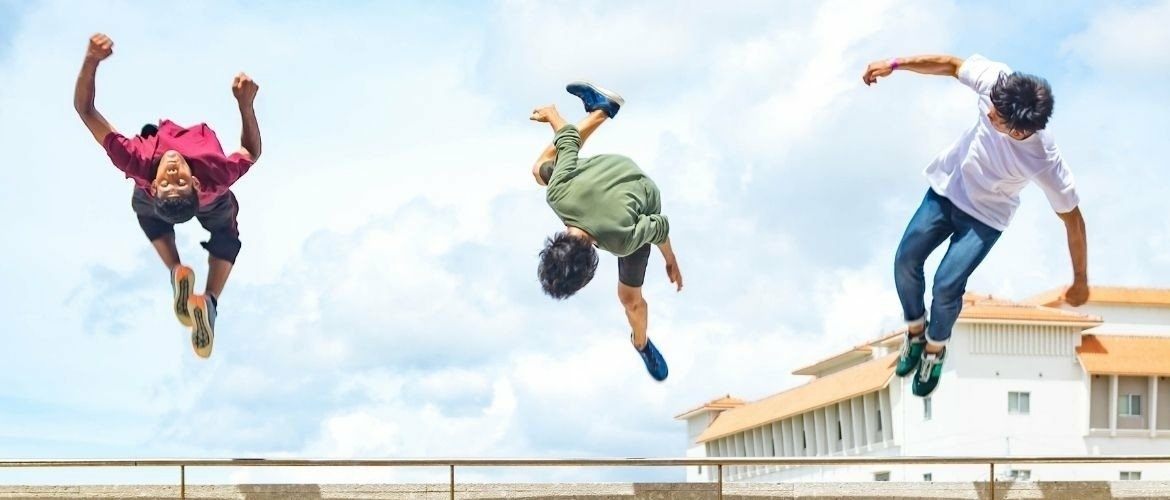Providing a gymnastics lesson in a gym without fixed equipment can sometimes be difficult. Building up a lot of apparatus in the shortest possible time is awkward and sometimes quite heavy. How do you make sure you have variation in your lessons without having to build up too much? We're going to answer that question for you in this blog with tips on how to use benches in your lessons.
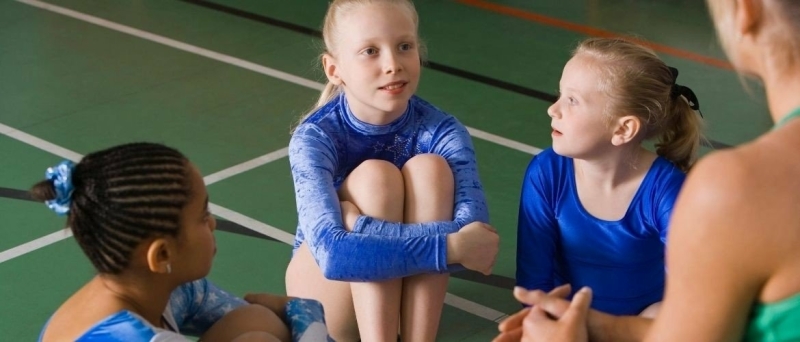
Benches
Benches can be used for many different things: as bars or as warming-up material. In this blog we are going to mention some ideas for a gym class with benches, so that you can give a varied lesson with few materials.
Warm-up
Before starting a gymnastics lesson, you should of course do a warm-up to prevent injuries. And let's face it: running around all the apparatuses or back and forth through the gymnasium is not the nicest way to warm up. Here are some ideas for a warming-up with benches:
- Place the benches horizontally in a row with about 2 metres between them. Let the children jump on or over them in all sorts of different ways. Like with one leg, with both legs, with a buddy, at a certain speed or with 3 to 4 children at the same time.
- Now that the children are already a bit warm, you can put the benches vertically in a row so that you get a long row of benches. Divide the group into two teams and have the teams start at both ends of the row of benches. The idea is that one team kicks the other team but they can only run one way, so either left or right. You can also start running anti-clockwise and then suddenly shout (or clap your hands) that they must run the other way. This way you get a bit more variation in the game. But watch out! Suppose team 1 is close to team 2 and you let the children turn around, then team 2 is suddenly close to team 1 with tapping.
Bridge training with benches
Bridge training with benches may seem and sound a little crazy, but you can do a lot with benches. For bridge, you need a certain strength in your upper arms to be able to support yourself. Like with squats, stomach twists and hips. With benches, you can train that very well. By doing different support exercises on a bench, you train the same muscles as you would normally do on the bridge. Here are some examples.
Exercises
- Reclining supports: Have the children recline with their feet or hands on the bench and alternate. (You can also use a base on the bench or on the floor where they place their hands). A buddy can check that they are holding the correct position and they can lift up the feet if necessary to make the exercise more difficult. The lying supports can also be used sideways on one arm. You can also have them do spread-close jumping with their feet. It is then important that they keep the upper back and chest round.
- Swing jumps: Have the children stand at the end of the bench and swing. Again, you can do this in different ways such as landing with one leg, landing with both legs, with the legs spread (one foot on one side and one foot on the other side of the bench), spreading the legs and bringing them together in the air or backwards.
- Wheelbarrow walking: you can walk the wheelbarrow with your hands on the bench forwards, backwards and sideways. If you go forward and backward, the buddy can also walk across the bench. If you go sideways, the buddy can walk next to the bench. Sideways can of course go both ways, so one time you move your left hand first and the other time you move your right hand. You can also walk in a wheelbarrow with your hands on the ground and your buddy on the bench. You are then standing at an angle. This goes best sideways.
Beam training with benches
Beam is a fun but sometimes difficult piece of equipment. Many children find it scary because the beam is so narrow and high. A bench is a good solution. It is a little wider than the beam and a lot lower. That is why you can use a bench for basic exercises but also for learning new things.
Basic:
- Place the bench upside down on the ground, with the narrow side up. Let the children stand on the narrow part. This is a good way to train their balance. Think of a number of exercises they have to do for 10 seconds. For example: balancing on one leg (the free leg can be bent or straight), balancing on two legs and balancing on the toes (can also be done on one leg). All exercises can also be done crosswise or with the eyes closed.
- Turn the bench over again so that the wide part is on top. You can now practise different postures with the children. Such as the starting and ending positions of acrobatic or gymnastic elements. For example: handstands, cartwheels and pirouettes.
Acrobatic:
- Acrobatic elements can be built up well from the basics on benches. The children often find it less frightening so that they can think well of certain positions or instructions that they receive from the trainer. If these are repeated often, the elements on the bar will also go better because it becomes more automatic. You can also build up acrobatic elements from front rolls to flips. For example, the sequence could be: head roll, loose roll, handstand, splits, handstand and roll-through, cartwheel, cartwheel to toe position, arch a.c., tic-tac, arch f.c., barrel flip and closed flip. You can make this more fun by linking it to a points system or by having them work in pairs or threes.
- You can also let the children try new things. A bench is a fun, first step for a new element later on the beam. You can catch the children or use beam mats to make it less scary/difficult. You can also put the benches on top of each other to make it higher and thus a step more difficult.
You can also tilt the bench slightly to give the children more momentum. In this way they learn how to keep control during acrobatics.
Gymnastic:
We will now divide gymnastics into two groups: jumps and pirouettes. With both groups you can start from the basics, just like with acrobatic, or you can even expand to new elements.
Jumps:
- For example, start with the basics with stretching jumps. Then you can work on your posture when landing. After that, you can continue with the stretch jump ½ turn or 1/1 turn. You can also continue with a running jump, sisonne, splits, cat jump, squat jump, squat corner jump, etc. Let the children look at each other and give tips. That way they also learn from each other 😉 . You can also build up to more difficult jumps, such as the splitshot or cross jumps.
Pirouettes:
- Just like jumps, you can build up pirouettes from the basics. You can give attention to the beginning and ending postures and make sure the right technique is used. With magnesium you can put little lines on the bench where the children have to look at or place their foot at the end of the pirouette.
Jump off:
To practise jumping off, it is useful to have a few mats available so that the children do not hit their ankles/knees too hard when they land.
Start with basic jumps so that they can master the landing positions well. For example: closing jump, stretch jump, squat jump etc. After that, you can put 2 benches on top of each other and build up to somersaults. Landing on a thick mat is then advised.
- You can also do a jump-off with an acrobatic element in front of it, such as a cartwheel, a bow or an arabic. Because the children do the acrobatic element on a bench, it is less difficult and they can focus on the jump off. You can start with, for example, a cartwheel stretch jump from one bench, then from two benches on top of each other and finally with a somersault.
Floor
Floor may seem to consist only of series of jumps and gymnastic jumps but it is much more. You can also use floor benches very well.
Exercises:
- Put the benches in a large square of 12 x 12 metres. You now have the dimensions of a competition floor. Ideal to let the children practise their floor exercise to music. And the children who are not on the floor can sit on the benches and 'judge' the exercise.
- Place two benches on top of each other and let the children take turns standing on them doing a number of steps or postures from their exercise. Let the other children watch. This makes them feel as if they are on a stage and most of them will try harder to do it properly or to complete the steps beautifully. In this way you teach the children how to shine during their floor exercise and how they can present the exercise in the best way to the jury.
Lines:
Nice straight lines in gymnastics are very important. With benches, you can practise the lines in a number of basic elements very well. Like with handstands:
- Have the children form pairs. One stands horizontally on one side of the bench and the other opposite on the other side. One of the two children puts his hands on the bench and kicks up to a handstand, the other holds the child back and also checks the posture of the handstand. In this way the children learn what a good handstand looks like and what a good handstand feels like when they are standing in a handstand themselves. By using the bench, they also practise kicking up their heels.
- You can also do this with cartwheels. Have the children stand on the bench and do a cartwheel from the bench. This can be done with the hands on the floor or still on the bench. Try to focus on the posture during the cartwheel. By giving tips and hints, you will teach the children a good posture with more speed, so they will be able to use it better in elements with more speed.
- You can also do a cartwheel onto the bench from the ground. This is another way of practising kicking up the heels. If this is still too difficult, you can of course help them with it.
Jump
The jump over a pegasus, for example, is of course a very important part of the total jump, but the run-up is also very important. By creating a fast and powerful run, you can get over the pegasus better and therefore use better techniques. A fun way to train your run-up is with benches.
- Place the benches in a long, vertical line. Let the children run along them forwards, sideways and backwards. Try to teach them good posture and arm movement so that they will use their arms effectively when running.
- Then have the children line up behind the benches. You can now do all sorts of different walking forms that will teach the children to be more aware of their approach. Think of the same exercises as with a running ladder. For example: knee lifting along the bench with the ankles higher than the bench (the children can check each other on this), knee lifting over the bench from left to right and back again (jump from one leg and land with the other leg on the bench, then change legs on the bench, then jump off the bench and land on the other leg, etc.), sideways knee lifting against the bench and sideways knee lifting with the ankles higher than the bench. Naturally, sideways knee lifts are possible with both legs in front.
- Finally, you can have the children do a sprint race in which they have to pay attention to the movement of their arms and legs.
Finally
If you repeat these exercises often enough, you will soon see results. And then comes the tricky part... combining it with a jump over the pegasus or another apparatus.
We hope these exercises for each apparatus will help you to give a varied gymnastics lesson! Please let us know if you have found some tips that could help.
